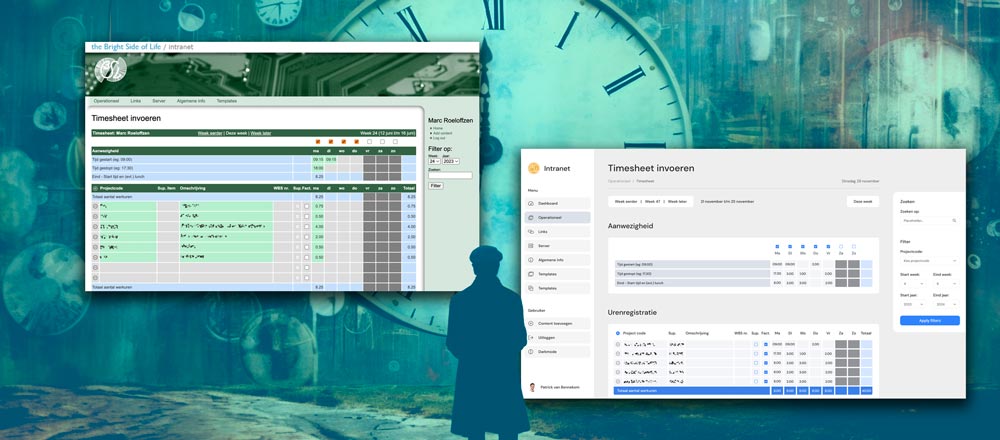Several of our clients are migrating to the Cloud, and some that aren’t ready for this step are reviewing their legacy systems, intending to migrate to the Cloud in the future. We’ve recently completed two migrations on behalf of multinationals, and our experience has taught us that a direct approach (simply redeploying existing databases and applications on virtual machines) is not necessarily the best route. Our blog contains several tips for others considering a migration.
Enterprises planning a migration
Many enterprises have been using proprietary relational databases (RDBMSs) in their data centres and are now considering migrating to the Cloud. These enterprises have felt constrained by the lack of flexibility in deployment and the ongoing cost of licenses, system management and maintenance. However, the default option of moving their systems wholesale to the Cloud is not always the best choice. This approach can inhibit them from taking full advantage of the flexibility and scalability of the Cloud.
As enterprises make plans to move database workloads to the Cloud, there are several essential questions they should ask:
- Will our current DBMS meet our data management needs moving forward?
- What new challenges will we face that our existing DBMS cannot address?
- Would a Cloud-native DBMS make it easier to leverage all the Cloud platform features?
- Would a new database architecture offer advantages over the existing DBMS?
- Does our relationship with our current DBMS vendor serve our best interests?
Established relational databases will remain relevant for many applications, such as OLTP. They will continue to fulfil that role, albeit in the Cloud rather than on-premise. However, there are application areas where a transition to new architectures (such as key-value data stores or noSQL databases) can provide many benefits. A whole new world of APIs and microservices opens up by migrating to the Cloud, offering new opportunities for innovation. Developers (including BSL) are familiar with many of these technologies, as these skills make it easier to build and maintain database applications and services. In addition, these technologies can improve flexibility and performance.
New data optimisation opportunities
For the most part, traditional DBMSs used “on-premise” have been designed to serve two classes of use cases: online transaction processing (OLTP) and business intelligence (BI) analytics. However, new types of applications are emerging that also require database support. These include:
- Customer experience applications.
- Deep and recursive data analysis to which SQL is not suited.
- Support for artificial intelligence (AI) and machine learning (ML).
- Complex relationship analysis using data graphs.
- Streaming data capture and real-time event handling.
Such new workloads require purpose-built databases with better scalability and performance while supporting a more agile development process. These include data management systems such as document data stores, in-memory-optimised databases, key-value, graph, and other technologies. As a result, many enterprises are willing to rewrite their applications using APIs and microservices, storing data using distributed databases. For example, AWS and Azure offer hundreds of APIs and a range of data management solutions, making it easy to integrate specialist and innovative technologies without needing extensive in-house development resources.
Beware the pitfalls of open-source
Some enterprises have turned entirely to open-source as their route to the Cloud. They believe this will reduce the cost of ownership. In addition, the development community readily adopts leading open-source projects, so finding developers is generally not a problem.
However, the open-source route poses unique challenges. For example, open-source solutions frequently fail to meet the needs of many enterprises in areas such as service-level agreements (SLA), guarantees of availability, scalability, and performance, as well as data security and privacy support. What’s more, the fine print of open-source agreements is often a source of concern for legal departments, perhaps requiring developers to share their expertise with the open-source community – and indirectly – with their competition.
Most enterprises do not have staff with the technical depth needed to keep open-source systems running, so they contract with an open-source support service. But companies offering these support services are primarily commercial vendors, increasing the costs. Furthermore, to provide additional scalability, performance, security, and reliability, one frequently finds that the original open-source license agreement has expanded to include code that is not open-source. As a result, the cost can increase still further, quickly undermining the original business case for the adoption of open-source.
Business benefits of moving to the Cloud
To take advantage of all the Cloud offers, enterprises should embrace the dynamic scalability of virtual machines and agility in the provisioning of processing or storage resources. Such provisioning must also deliver reliable performance and the means, through platform integration, of faster innovation. Platforms such as Azure and AWS provide this automatically without additional operational effort and at an affordable, predictable price.
Also, many enterprises require worldwide availability. The flexibility of deploying and moving workloads to distributed data centres will enhance performance, optimise network traffic and provide the best possible global response times.
On-premise data centres vs management in the Cloud
Enterprises with in-house data centres must purchase, provision, manage and support their systems and databases. There is no alternative other than scaling these systems to the “high-water mark” of demand when data volumes are high, even though they run at much lower capacities the rest of the time. There may also be a need for skilled (and therefore costly) personnel around-the-clock to keep the systems running and manage routine processes such as backups, database tuning and load-balancing.
In the Cloud, by contrast, resources can be dynamically allocated on an as-needed basis and can scale up and down as required, ensuring the best possible return on investment. Also, with managed services in the Cloud, tasks such as patch application, systems maintenance, and database backups are no longer your responsibility. These benefits make the drive to move in-house solutions to the Cloud inevitable.
Refactoring databases and integrating new technology
At the same time, the benefits of the architectures, APIs and alternative database technologies offered in the Cloud mean that migration should encompass more than a one to one migration from in-house data centres to the Cloud. Simply moving data and existing applications to the Cloud represents a missed opportunity.
So, why not look into the potential of the selected Cloud platform to extend and improve your existing services. For example, consider refactoring your databases using the range of available database technologies. Examine the added value of – for example – extending the functionality of your applications; perhaps adopting APIs for content translation, speech recognition, and AI / Semantic Search, all of which are easy to integrate using the APIs and microservices available on Azure or AWS platforms. Above all, take the opportunity to transform your in-house solutions into a format and mode of operation that serves the new workloads made possible in the Cloud.
BSL cloud solutions
BSL has considerable practical experience in migrating to the Cloud, working on behalf of global enterprises to migrate to Amazon Web Services, Microsoft Azure and Google Cloud services. Let our experts help you to make this transformation. All you need to do is get in touch.































